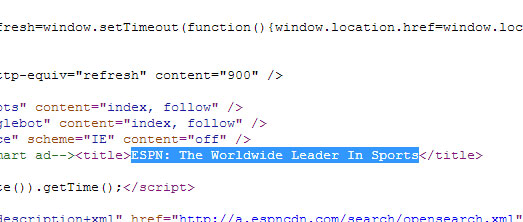When it is time to publish a new blog post online, here are a few basic on page SEO items to consider when posting:
1. TITLE TAG – The title tag of the post is one of, if not the most important of the on page items for the search engines. The title tag should be unique, concise and as descriptive as possible. Search engines display a various number of characters on their respective results page, so a good rule of thumb is 60-70 total characters including spaces, although recent data suggest that pixel width of the characters might be a factor instead of the actual number of characters.

2. META DESCRIPTION – While meta descriptions do not affect rankings, a good meta description can entice a user to click through to your page from the results page. The meta description is the snippet that may appear on search engine results pages. This is your opportunity to craft a brief summary of the page/post that will draw attention to the result and hopefully make the user click on the link to your page.

3. META KEYWORDS – This option has traditionally been a source for keyword stuffing. It will not help your rankings, and in the video below, Matt Cutts from Google’s Web Spam Team, states “you shouldn’t spend any time on the meta keywords tag, we don’t use it…” He addresses the Meta Description tag’s role also in the video:
4. OPTIMIZE IMAGES – First, it is important to make sure the file name describes the image. Rather than simply using “img123.jpg,” rename it to “sunrise.jpg” or a suitable descriptive name before uploading to the post.
It is also important to use the “alt text” attribute to describe your images. These are the tags that let the search engines know what the image is since the bots don’t actually see the image. Some browsers also display the alt text when the mouse pointer is hovered over the image.
If a caption is appropriate, enter a keyword rich caption for the image.
5. INTERNAL LINKING – Be sure to link to important landing pages on your site within the content of your post. This is an opportunity to guide visitors and spiders to the important parts of the site while also distributing link juice to pages that you choose to highlight.
If you are writing for a WordPress site, there are a variety of plug-ins that simplify modifying most of these steps, including Yoast’s WordPress SEO, All in One SEO Pack and Platinum SEO Pack to name a few.
And last, but most importantly,
6. CREATE REALLY GREAT, UNIQUE CONTENT that users will find useful and want to share. It sounds fairly simple and straight forward, but the most difficult to execute.
There are many aspects of SEO, but starting with a great piece of content and following these few tips, people and search engines will be able to find your content more easily.



